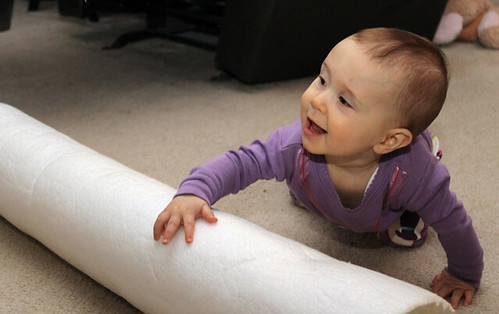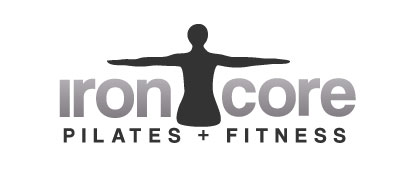For original blog entry and more about CrossFit, please see: http://unitedbarbell.com/blog/584/Muscle%20Control%20with%20UB
by Jennifer Lynne Bearse
WHAT IS FOAM ROLLING AND WHY IS IT USEFUL?
Most of you have seen the foam rollers around UB. Some of you may even own one. But many don’t know how to use it, or only know a few basic releases. Simply put, foam rolling can be best defined as a “self massage.” Technically put, foam rolling is a form of self myofascial release (a body work technique using gentle, sustained pressure on soft tissues while applying traction to the fascia). This results in softening and lengthening (release) of the fascia and breaking down scar tissue or adhesions between skin, muscles and bones. The fascia and the underlying muscle becomes stuck together for various reasons – disuse, not enough stretching, or injury. If they aren’t addressed these adhesions result in restricted muscle movement and can cause pain, soreness and reduced flexibility or range of motion.
The foam roller is a simple but powerful way to help you reset your neck, spine, lats, hips, glutes, and your legs so you’re primed and ready for higher intensity exercise, while minimizing the chance of injury and/or soreness.
HOW CAN FOAM ROLLING HELP WITH CROSSFIT?
Bad things happen when you let once mobile joints lock up over time. Getting your back squat below parallel or your overhead press locked out overhead can become daunting tasks when you don’t actually have the range of motion that you expect of yourself. But since most of us CrossFitters like to push ourselves beyond our comfort zones, you’ll go to any means to get that full range of motion and make that rep count, likely compensating for the stiff joint through adjacent joints and tissues, which is bad news, and can cause dysfunction in that the whole region, resulting in discomfort, pain and injury.
Mobilizing specific areas may also help reduce pain in and around joints. It can also increase your awareness of position and motion, as well as positively affect muscle spasms and muscle guarding. Mobility should be a proactive approach, not a reactive one. In other words, don’t wait until you’re in pain or injured…being injured is no fun, so prevent it from happening in the first place!
EFFECTIVENESS/AREAS OF RELIEF:
The foam roller is essential for relieving soreness and pain in long muscle groups, but you can use it to roll out almost your entire body. Common areas to focus on include the upper and lower back, IT bands, adductors, quadriceps, and calves, but it can also be used to help trigger points in smaller areas such as the TFL (tensor fascia lata), glute medius, hip rotators, lats, and rotator cuff muscles (specifically teres minor). The lacrosse ball and, my personal favorite, the Trigger Point Massage Ball (also available at Sports Basement or online) are also great tools to get at trigger points in smaller areas in which the roller can sometimes be a bit more difficult to use effectively.

If she’s got rollin’ down, so can you!
EXERCISES:
Exercises will range depending on the areas in which pain or soreness subsides. If you are rehabbing an injury, be sure to focus on exercises that are directed to the injured muscle group, but be conscious not to overwork the injured area.
Routine exercises should focus on the longer muscle groups as a maintenance plan, but be sure to also focus on the smaller areas in order not to neglect specific muscle tissue.
DURATION AND FREQUENCY:
For each position/exercise, roll the area for a 60s count. You can also roll in repetition counts, such as sets of 10. If you find a trigger point/knot, direct the foam roller pressure over that area to relieve the pressure. Hold in that position to relieve the pressure, for as long as you can, making sure to inhale and exhale deeply. This will be painful, so adjust to your personal pain threshold. Total rolling time should be no more than 10-15 minutes.
If injured, roll the area of injury two to three times a day, if possible, but at least once a day. If rolling to prevent future injuries, roll two to three times a week. Rolling is good for you both before and after your workouts! Before workouts helps loosen muscles up, and after workouts helps aid in recovery from intense exercise.
If you combine rolling with a solid tool kit of recovery methods, you will notice major differences in your performance, and CrossFit will become an even better, safer experience! Use that dead time at home when you’re watching TV or sitting on the couch to roll out. You will see tremendous gains in your CrossFit if you do.
Want to learn more and have the opportunity to practice foam rolling techniques in person? Contact me for more information on foam roller workshops!
Now get rolling!
HELPFUL LINKS:
Foam Rolling Exercises and Videos
Foam Rolling Articles

